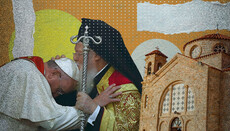Non-recognized: 25 years UOC KP ≠ 140 years ROC (in lay terms)
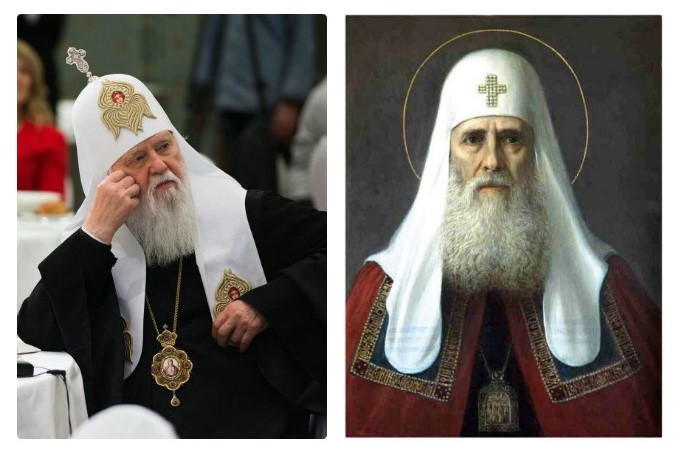
The heart of each Ukrainian patriot, who is affiliated to the Kiev Patriarchate denomination, gets outraged when somebody intends to defame this “splendid” structure. And it does not matter who will do it – just acquaintances or Patriarchs of Local Churches. Any attempts to bark up the wrong tree end up with total failure, since patriots hurl a counterargument, distilled from the UOC KP administrative rhetoric, to each argument of critics, the No1 counterargument being historic parallels between the current status of the Kiev Patriarchate and the state of the Russian Church of XV-XVI centuries.
Both chief of the UOC KP Philaret and his spokesman Yevstratiy Zoria, backed by patriotic mass media, make a regular allusion to this “killing” argument. Indeed, owing to the fact that autocephaly of the Russian Church was not recognized in the Orthodox world for 141 years, then non-recognition of the UOC KP for only 25 years is a little term. Given the ROC is currently the fifth in the diptych of Local Churches and the biggest Church by the quantity of parishioners, Kiev Patriarchate has just brilliant prospects! One has just to put up with that for a short while.
Yard-keeper Markiyan has such stamina – he job obliges him to be so. He believes himself a patriot, but is not sure that Kiev Patriarchate is the only right choice for an Orthodox Ukrainian who loves his/her country and is proud of it. That is why he decided to work it out if a patriot needs to wait and remain patient till the UOC KP has been recognized – will it yield any fruits?
After all, according to one of our talented fellow countrymen, “wisdom does not always come with age. Sometimes age comes alone.”
Therefore, having surrounded himself with historic literature, Marliyan decided to find out if the ROC was really in the same situation for 140 years as the Kiev Patriarchate at the moment or if it is actually not true?
ROC “Non-recognition”
For that end our “protagonist” looked into the history of the second quarter of XV century. He revealed it was hard time for the Orthodox Church, since its stronghold – the Byzantine Empire – was in its final days. A financial and political crisis of Constantinople compelled its rulers to seek assistance from Catholic Europe. Anticipating military and financial support, Emperor John VIII Palaeologus and Constantinople Patriarch Joseph decided to ask Rome for help. Pope Eugene promised such support, but in return for union. In 1438 in Ferrari (and then in Florence) a Council was convened with a view to establishing a union of Eastern Orthodox Church with Roman. The Emperor with the Patriarch, 22 Metropolitans, bishops and nearly 700 other clergy- and laymen set out for Italy on the Pope’s galleys. Markiyan found out that Florentine Union means in essence the Orthodox Church being subjected to Catholic dogmata.
One of the key advocates of the union with Rome was Metropolitan Isadore of Constantinople Church. With particular sympathy does he put his signature under the union act: while the rest simply wrote – “I sign under”, he wrote unlike others – “I sign with love and approval”. He was the man sent by Constantinople as a next head of the Russian Church.
Upon the arrival in Moscow in the 1441 year, Isadore, who had been raised to the bench of Cardinal and Pope’s legate, prays for Pope Eugene and announces solemnly the decision of the Florentine Council right at the first Liturgy. Moscow Prince Basil urged Isadore to recant union and return to Orthodoxy. The latter refused and the Prince sent away the renegade cardinal-metropolitan from the country.
The union was condemned by Constantinople only 43 years later, in 1484. So it was logical they could not wait in Moscow for the Greek to return to the Orthodox confession and could not know whether it would happen altogether.
Having written a letter to Constantinople (in 1441 and 1445) with a request to elect a head of the Church on their own and not received a reply, Moscow elects the first Russian Metropolitan in 1448 – the head of the Russian Church.
Therefore, Markiyan established: the Russian Church was facing a dilemma – to adopt union (Catholic faith per se) or arbitrary autocephaly – and opted for autocephaly. Yet does it mean the ROC was no longer considered as a Church in the Ecumenical Orthodoxy? That its priests were forbidden to serve and that its Sacraments were not Sacraments anymore? Not at all! For at those times it was namely Unionized Constantinople that appeared an outsider!
In 1497-1498 there was restored a church communication of Moscow and Athens, and gifts with a list of ancestors’ names of the Great prince of Moscow were sent to Constantinople for the church commemoration. In 1518 a big patriarchal mission, led by Metropolitan Gregory, arrived in Moscow. The Greek made an attempt to convince Moscow to eliminate autocephaly, but Moscow did not agree, and that was settled. In the year of 1589, under agreement with the Greek party, the first Moscow Patriarch was elected, and Constantinople Councils of 1590 and 1593 recognized Moscow Patriarchy.
Markiyan’s conclusion: all doubts related to this period (1448-1589) in the ROC life can refer only to the legitimacy of its administrative organization (autocephaly), but by no means to the canonicity of its status as a Church.
UOC KP Non-recognition
When conducting his previous study, Markiyan knew already that all Local Churches in their unity constitute one Ecumenical Orthodox Church. All structures which are formed outside this unity (despite declarations made by their leaders) have nothing to do with Ecumenical Church. Having turned to history, he made it clear that Kiev Patriarchate was created in 1992 as a result of the union of UAOC (non-recognized in the Orthodox world) and Philaret (Denisenko), who had been disgowned by that time.
It was the point when Markiyan in his research came across an amazing discrepancy of what KP leaders tell about their organization and how Kiev Patriarchate is taken in the Orthodox community. In particular, “patriarch” Philaret affirms the UOC KP is recognized by all Local Churches, the only obstacle being recognition of its autocephaly.
However, there is NOT A SINGLE CHURCH to recognize Kiev Patriarchate as a Church, not speaking of this organization’s autocephaly. At the same time there are a lot of statements of Orthodox hierarchs about their recognizing solely the Ukrainian Orthodox Church, while the UOC KP is called schismatics who “were rejected by Orthodox Churches long ago and are related to Orthodoxy only by the name they bear” .
It appears somebody tells a lie – either UOC-KP leader Philaret or all Orthodox hierarchs.
Markiyan felt jaded: proponents of the Kiev Patriarchate seem to be in a stalemate situation.
Actually, if heads of Local Churches are right, then the UOC KP is not a Church. It means it is pointless to attend its temples – for all its “sacraments” are not sacraments, i.e. there is no true confession, baptizing and communion there. Consequently, the criticism of Kiev Patriarchate in Ukraine is not just “hostile patriot-offending propaganda”, but a position of hierarchs of the WHOLE Ecumenical Church.
So if Philaret is right, why then strive to be recognized by the Ecumenical Church, whose patriarchs tell a lie?
Nonetheless being a careful and goal-oriented man, Markiyan decided to accomplish his research and show its results in a common table.
| ROC (1448-1589) | UOC KP (1992-2017) | |
| Recognition by Ecumenical Church before the period stated | Yes | No |
| Recognition by Ecumenical Church during the period stated | Yes | No |
| Recognition by Ecumenical of autocephaly legitimacy | Yes | No |
Suddenly Markiyan recalled his favorite childhood book – “Old Man Khottabych”. In this book Soviet schoolboy Volka found an old lamp and drew out an ancient almighty genie. However, whatever the genie fulfilled – was always out of place. He made beautiful copies of modern gadgets but was unable to make them work. The most memorable moment was when the genie cloned a phone. Externally the phone looked exactly like a real one, even better. The only problem was it could not function. Asked by Volka what was inside the phone, the oldster reported – genuine gold!
The Kiev Patriarchate looks like this genie’s whizzbang for many years now. They have rich apparel, their jubilees are honored at the highest level possible, and they are granted national sanctities for use. There is one but… The “sacraments” this “church” delivers to people are no more effective than the phone delivered to Volka by old man Khottabych.
0
0
If you notice an error, select the required text and press Ctrl+Enter or Submit an error to report it to the editors.
Read also
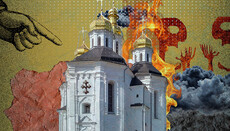
Broken windows theory: why sharp polemics destroy the Church
12 December 17:25
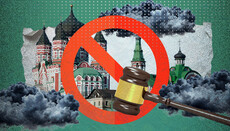
On the eve of the trial, or the UOC without Kyiv Metropolia
10 December 18:53

All will be persecuted: what did Apostle Paul mean?
07 December 14:44
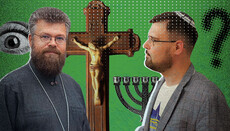
Theology of the OCU: Do Christians and Jews have one Messiah?
06 December 16:17
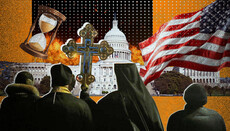
American Orthodoxy under attack: a Ukrainian scenario for the USA?
05 December 17:03






